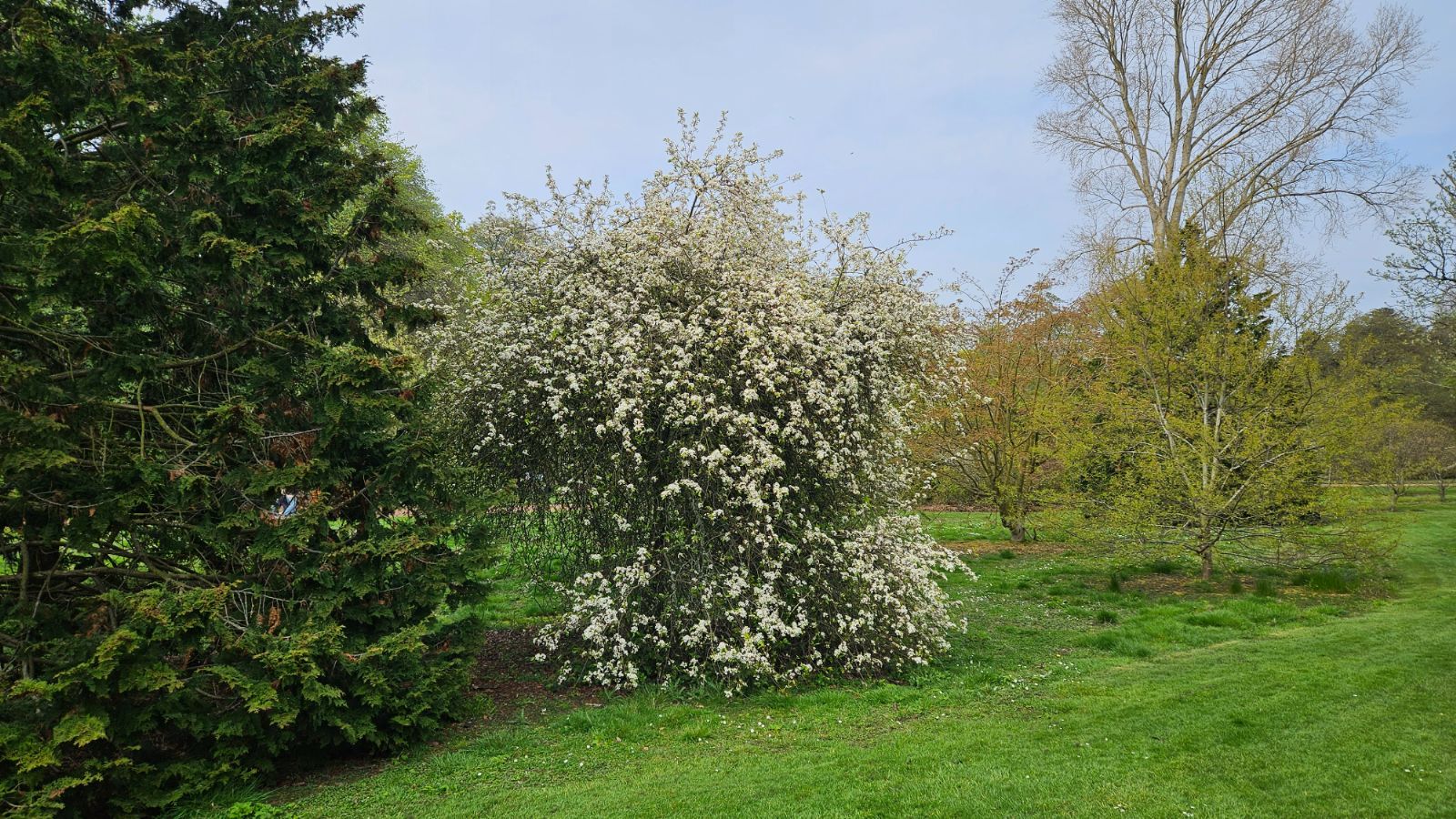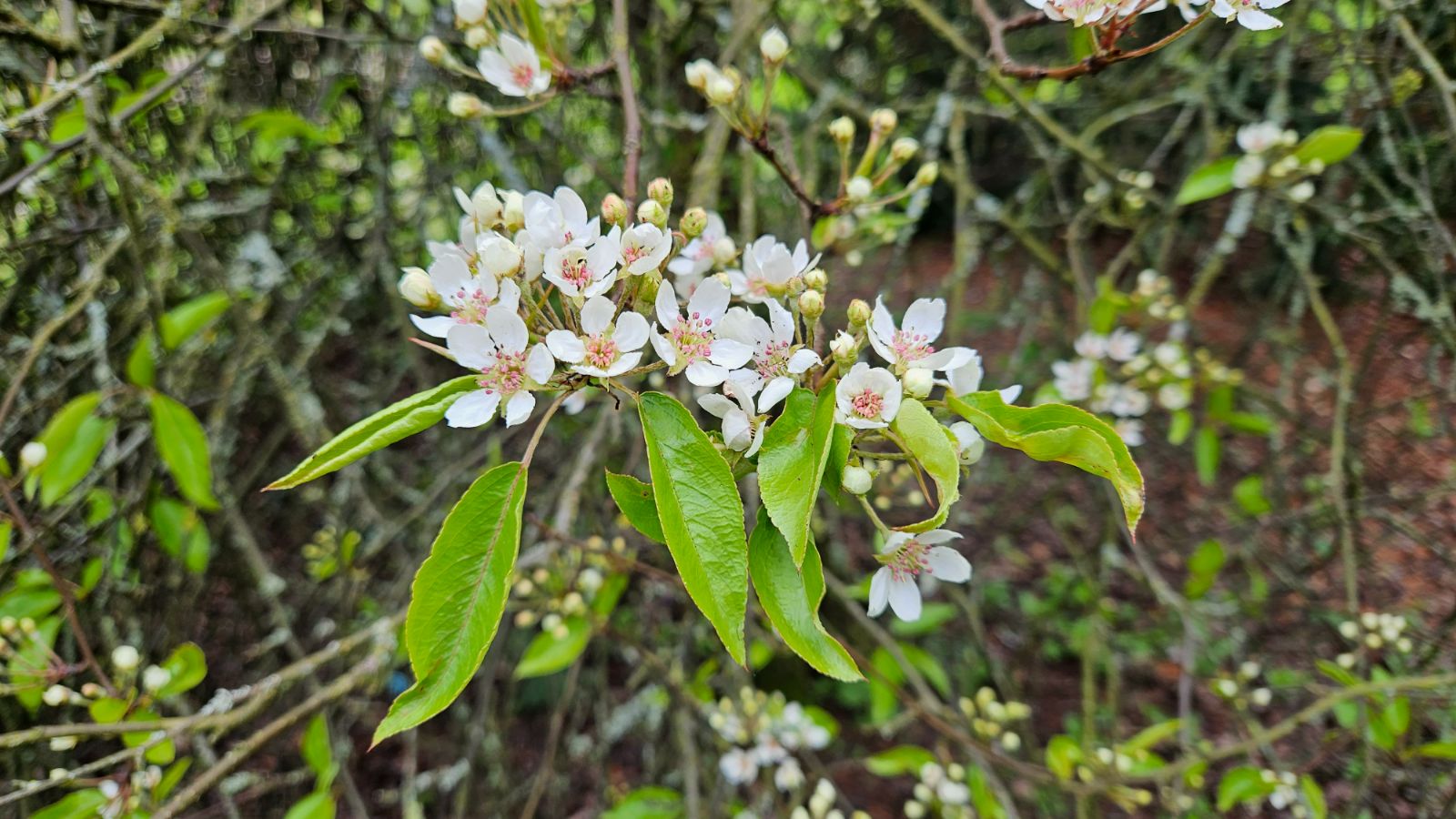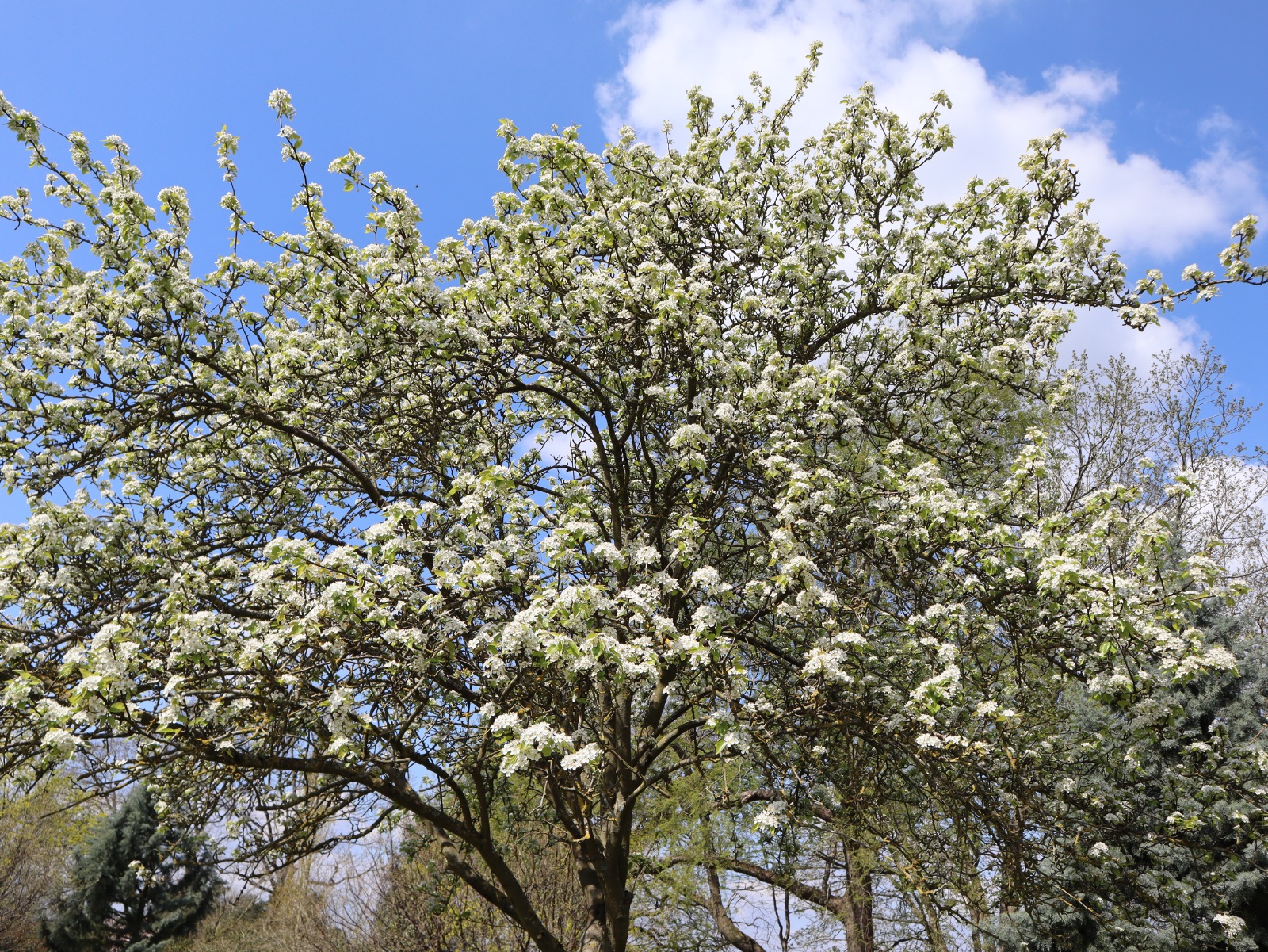Pyrus pashia
Credits
Article from Bean's Trees and Shrubs Hardy in the British Isles
Recommended citation
'Pyrus pashia' from the website Trees and Shrubs Online (treesandshrubsonline.
Genus
Synonyms
- P. variolosa G. Don
- P. kumaoni Decne.
- P. pasbia var. kumaoni (Decne.) Stapf
A small unarmed or spiny tree; branchlets glabrous when mature, usually more or less woolly when young. Leaves ovate or oblong-ovate, 2 to 4 in. long, 11⁄4 to 2 in. wide, usually rounded at the base, apex varying from long-tapered to blunt, glabrous when mature but often woolly when young, especially beneath, margins set with fine, rounded teeth; stalk 1 to 11⁄2 in. long. Flowers white (rosetinted at first in some cultivated trees), about 3⁄4 in. across, closely packed in rounded corymbs 2 in. across, each flower on a stalk 1⁄2 to 3⁄4 in. long; calyx-lobes ovate to triangular, obtuse or acute; typically the inflorescence-parts are woolly but they may be glabrous or almost so; styles three to five; stamens twenty-five to thirty. Fruits nearly globular, but narrowed towards the stalk, brown with pale specks, 3⁄4 to 1 in. across. Bot. Mag., t. 8256.
P. pashia is of wide distribution in temperate Asia, from Afghanistan throughout the Himalaya and then through Burma and Assam to W. China; introduced 1825. This is one of the most distinct and ornamental of pears, with its compact flower clusters, the rounded, overlapping petals and the cluster of deep red stamens in the centre of the flower. The leaves on sucker shoots or on vigorous shoots of cut-back trees are frequently deeply three-lobed. In the Himalaya the fruit is eaten after having been bletted, like a medlar.
The species varies greatly in indumentum from plants with the young leaves and inflorescence densely tomentose to plants with these parts glabrous. The latter have been distinguished as var. kumaoni (Decne.) Stapf but only represent an extreme state of the normal variation of the species.
Pyrus pashia was reintroduced by Forrest from Yunnan.




